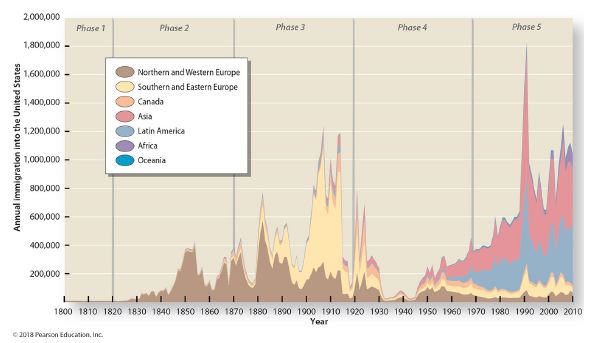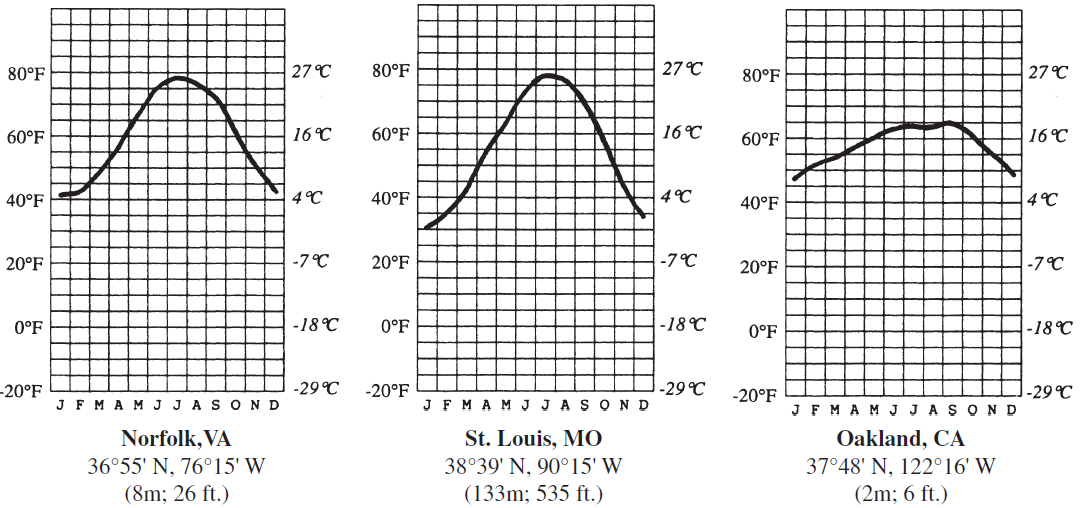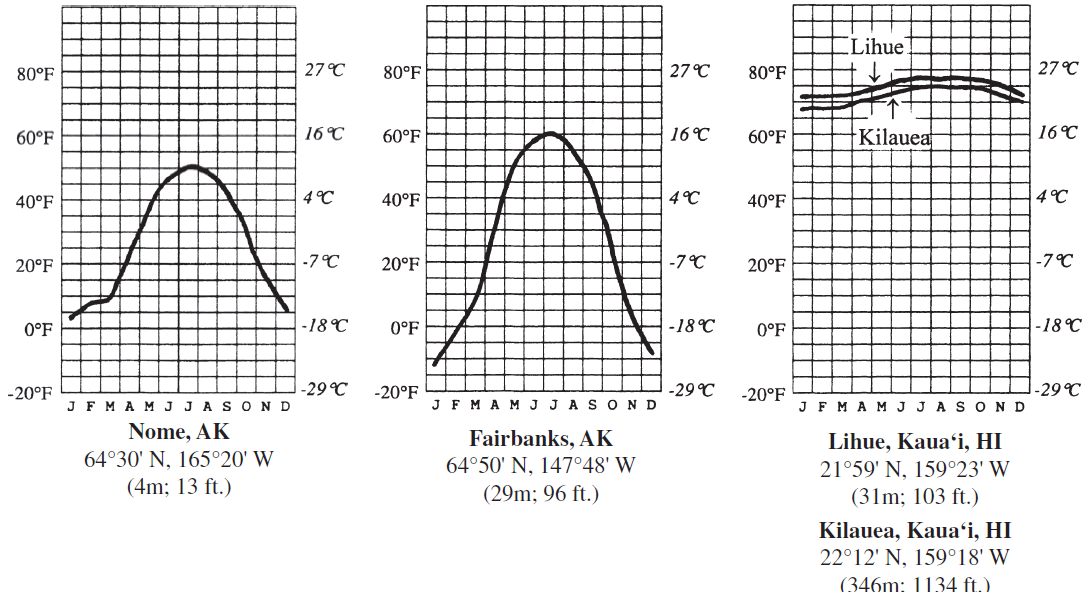What is the main source of terrigenous sediments to the ocean?
a. volcanic eruptions
b. rivers
c. dust and ash
d. cosmic dust
e. marine snow
b
You might also like to view...
Strip cutting of timber is a method of harvesting that
a. harvests trees singly or in small groups b. involves clearing trees along a contour of the land within a narrow corridor c. removes all trees from a very large area, with no attention to land contours d. is particularly damaging to the forest e. is promoted by logging companies because of the high profit margin
During Phase 4 of migration to the United States (1920-1970), where did the majority of immigrants come from?

A) England and Africa
B) Ireland and Germany
C) Southern and Eastern Europe
D) Canada and Latin America
E) Latin America and Asia
Which factor primarily explains the difference in temperature patterns between Fairbanks and St. Louis?
Six charts showing the average monthly temperature (in °C and °F) for seven U.S. cities are provided (the first letter of each month of the year is shown along the bottom of the charts). For each of the cities, the latitude and longitude, as well as the elevation, are provided.


Answer the question by comparing the temperature charts. In your answers, consider the one temperature control factor that is most responsible for the patterns shown (choose from latitude, land–water contrasts, wind patterns, or altitude). You may use the same answer for more than one question. You should locate each of the cities on a world map before trying to answer the question. If altitude is the main factor cited, calculate the expected temperature difference between the two cities based on the average lapse rate.
________ is(are) a common feature of the hydrology of very flat stretches of tropical rainforests
A) Swamps B) Lakes C) Streams running part of the year D) Few streams E) More water in plant life rather than in streams